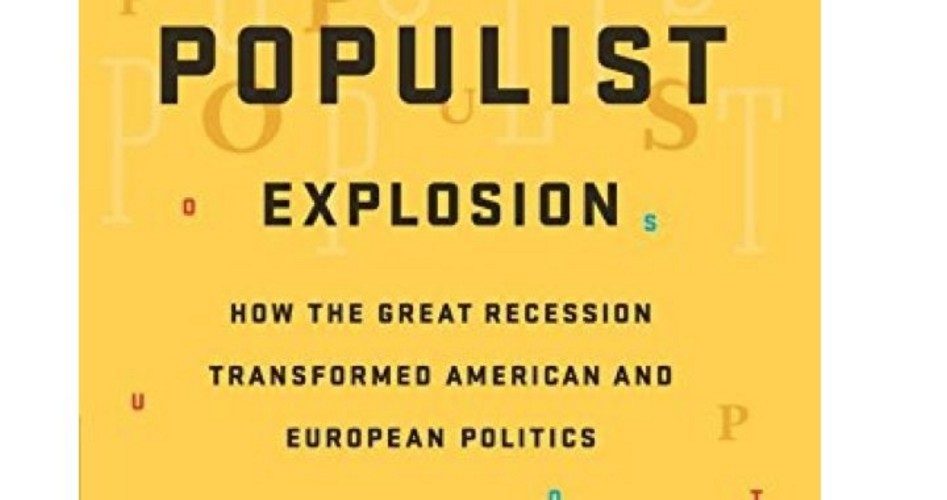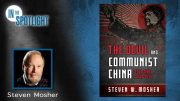
As has been the case for President Ronald Reagan before him, President Trump no doubt will be the focus of an almost unimaginable deluge of “analysis” for decades to come. What is almost certain is that much of what is being written in these early days is so influenced by partisan sentiment — both Left and Right — that a truly comprehensive evaluation of the man and his administration may be a very long time in coming. However, when such studies are written, John Judis’ The Populist Explosion will probably be cited as one of the earliest insightful attempts to understand President Trump both in the context of American history and in the light of global trends.
Judis is currently editor at large of Talking Points Memo — a website that is promoted as a source for “commentary on political events from a politically left perspective” — a fact that, when combined with his background as a former senior editor of The New Republic, means it is highly unlikely anyone will see him sporting a red “Make America Great Again” hat anytime soon. However, while Judis is by no means a disinterested bystander when he writes about the 2016 election, his analysis of Donald Trump (and Bernie Sanders, for that matter) in the context of American populism is quite insightful.
Although The Populist Explosion is a relatively short work, Judis offers a useful summary of the history of American Populism, tracing it from its roots in the People’s Party of the 1890s through such colorful characters as Ignatius Donnelly, Huey Long, George Wallace, Ross Perot, and Pat Buchanan. While the political policies advocated by such candidates vary widely from the socialist redistributionist ideas of Long to the paleo-conservatism of Buchanan, Judis notes, “There was always a more conservative strain within the populist movement.” Even Long was not someone who was relying on the support of “the masses”; rather, “It was among the middle class, who feared that they would be cast down by the Depression into the ranks of the very poor” that he found his rank and file for a mailing list of more than 7.5 million people. Judis contends that Long’s agenda helped drive the policies and legislative agenda of the administration of Franklin Roosevelt, and thus shaped the “New Deal liberalism” which Judis contends remained ascendant from 1932 to 1968.
Like the late-paleo-conservative writer Samuel Francis, Judis points to sociologist Donald Warren’s 1976 study of “middle American radicals” — or MARs — as a crucial segment of the American body politic: MARs “feel the middle class has been seriously neglected,” Warren wrote. They see “government as favoring both the rich and poor simultaneously.”
Warren’s MARs held conservative positions on poverty and racial issues. They rejected racial busing and welfare agencies as examples of “the rich [giving] in to the demands of the poor, and the middle income people having to pay the bill.” They disliked the national government, but they also thought corporations “have too much power” and were “too big.” They favored many liberal programs. They wanted government to guarantee jobs to everyone. They supported price (but not wage) control, Medicare, some type of national health insurance, federal aid to education, and Social Security.
Although the views of the MARs may shift with time, the disaffection of roughly a quarter of the electorate should not have been a body of voters who could be ignored. However, while the politicians may pander to the MARs, it has often been the “Populists” who have directly addressed their concerns. Judis maintains that both Sanders and Trump endeavored to appeal to this group; however, Trump did so effectively, and gave expression to a much broader spectrum of their concerns, especially when it came to the effects of illegal immigration on the American economy and culture.
For Judis, the conservative reaction to Obama made ready the way for a conservative populist, beginning with the Tea Party reaction to Obama’s left-wing agenda: “It appeared at the time that by responding forcefully to the crash [in 2008 and 2009], Obama might be able, like Roosevelt in 1933, to create a new enduring Democratic majority. But it was not to be. There was a dramatic difference from the start: While Roosevelt had been pushed by Long and the labor movement from the left, Obama almost immediately felt pressure from a new populist movement in the right.”
Understanding Trump to be a candidate who appealed to the populist concerns of the MARs, Judis rejects the efforts of American liberals to tar Trump as a “fascist”:
His promise to “make America great again” does not entail reacquiring the Philippines or launchhing new wars of conquest. On the contrary, Trump wants to withdraw from America’s overseas conflicts that don’t directly threaten America and to use the country’s resources instead to rebuild its infrastructure and manufacturing. His is an outspoken critic of the neoconservatives who wanted to create a new Pax Americana in the Middle East. Domestically, Trump wants to build a wall to stop illegal immigration. He wants to strengthen America’s borders not expand them.
Callings these parties and campaigns “fascist” can make for effective politics. It does bring out what is most toxic about these movements … but it is not helpful for understanding their actual role in contemporary history.
In short, while Judis is far from complimentary, he avoids the unhinged hyperbole that distorts the efforts of many on the political Left to understand what happened to Senator Clinton last November.
A crucial aspect of Judis’ analysis is his ability to understand these developments within the American political sphere in the context of developments in Europe. Although his evaluation of populist politics in Spain, Greece, France, the United Kingdom, Denmark, and Austria is understandably more cursory than that which is devoted to the United States, the reader is offered at least a worthwhile introduction to a complicated cast of characters.
Since The Populist Explosion was published before the November election, even Judis hedged his bets when it came to Trump’s ability to promote his agenda. In Judis’ words:
If Trump is soundly defeated, as seems likely at this writing, the Republican congressional and business leadership will argue that his defeat was due not only to his intemperate and amateurish campaigning, but to his populism. After Barry Goldwater was defeated in 1964, leading Republicans made similar arguments. …
In the near term, however, the United States is not likely to experience a political earthquake that would overturn neoliberalism and realign the parties.
One might argue that Judis should have taken more counsel from his own analysis. Still, there were few “respectable” political analysts who were willing to predict a Trump victory in tones louder than a whisper. Following the election, Judis wrote a column for Talking Points Memo that holds Clinton responsible for her defeat: “Clinton’s extreme vulnerability as a candidate suggests that other Republican challengers besides Trump might have defeated her; but Trump was also able to exploit Clinton’s vulnerabilities and appeal to a disenchanted electorate, some of whom had backed Democrats in prior elections, and would not have readily backed another Republican.” No mysterious Russian conspiracy is needed to explain why Clinton’s campaign was one of the most overfunded disasters in political history. In Judis’ words:
Whatever Trump’s ultimate loyalties and convictions, he spoke to concerns about jobs, wages, runaway shops, competition from low-wage labor abroad and from unskilled immigrants at home, trade deals that primarily benefited American companies but not their workers, and the unchecked power of wealth in Washington that had once been the province of labor Democrats and not of Republicans. In the wake of the Great Recession, many middle and working class Americans shared these concerns.
John B. Judis, The Populist Explosion — How the Great Recession Transformed American and European Politics, (New York: Columbia Global Reports, 2016). 182 pages. paperback. $12.99



